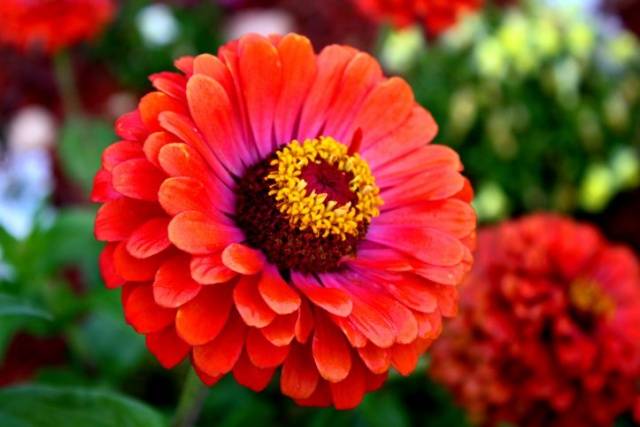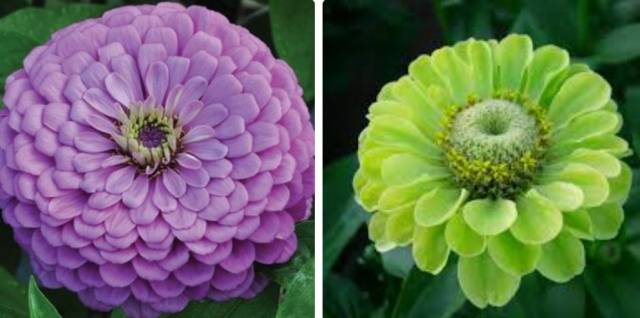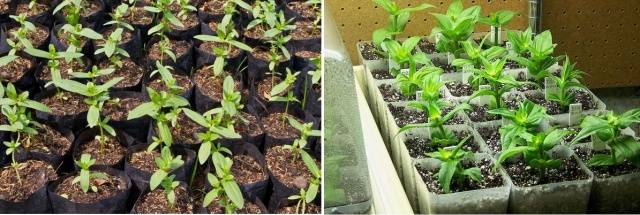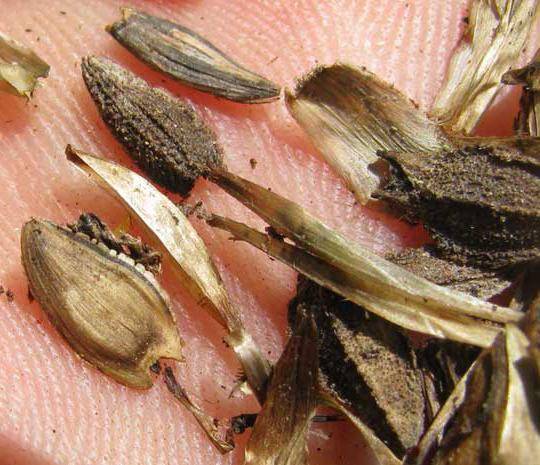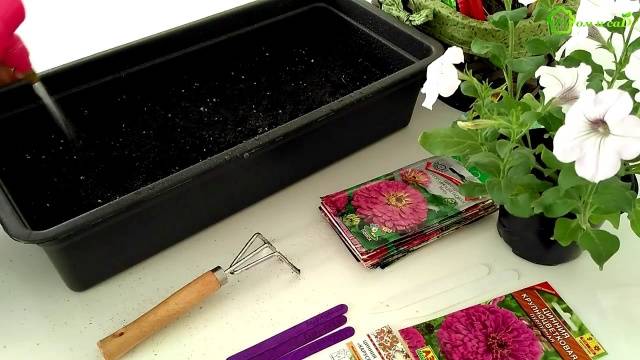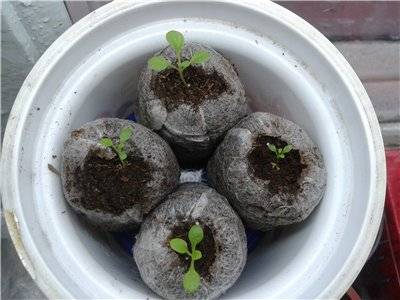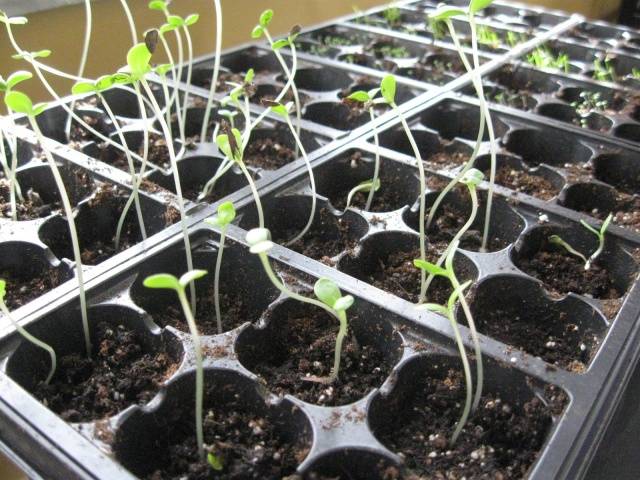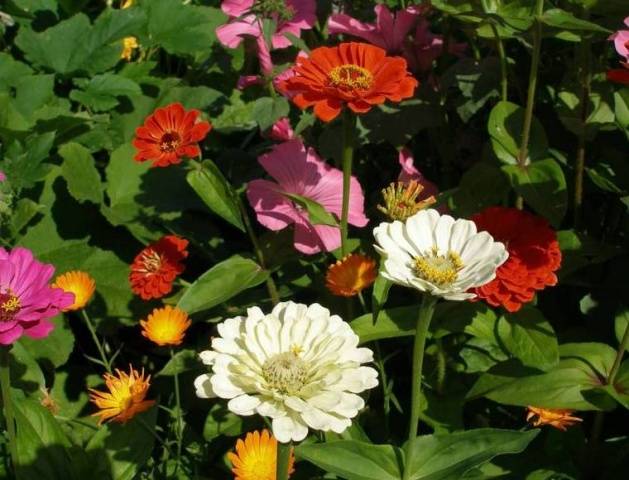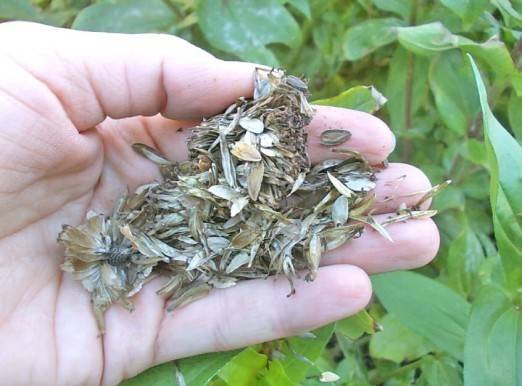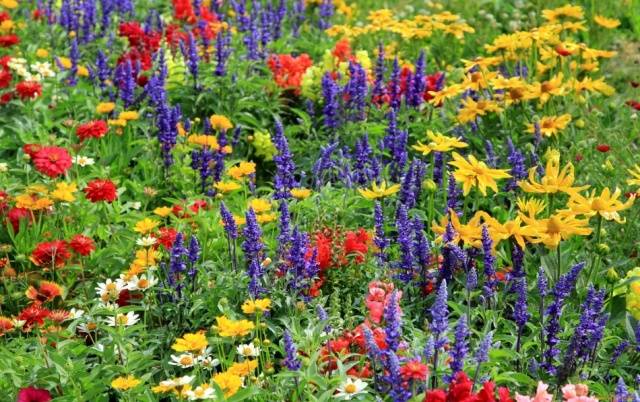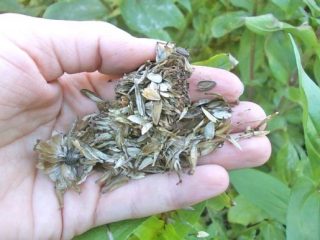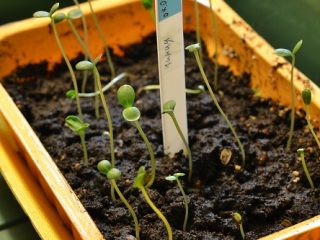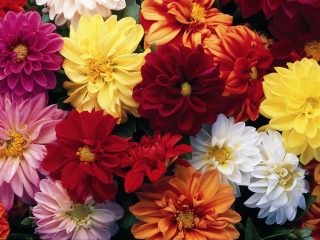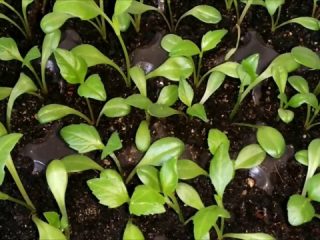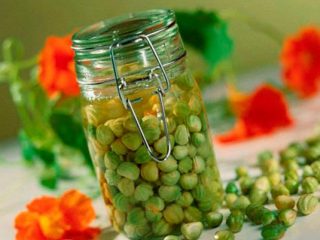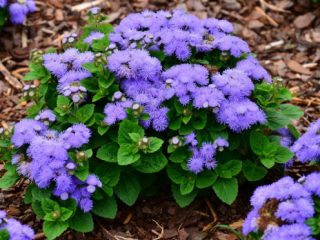Content
Cinnamon was grown by the ancient Aztecs, Russian summer residents are also well acquainted with this flower, but they call it, mainly, "major". Zinnias are perfect for decorating the local area in a rustic style, which in recent years has become more and more popular in Europe and throughout the world. You can combine these flowers with marigolds, snapdragon, marigolds or use more elegant varieties to compose a composition - zinnia looks great in tandem with any flowers. Florists love the majors for their variegated colors and amazing unpretentiousness, appreciate for the ease of growing and long flowering periods.
This article will be devoted to how to grow zinnia from seeds, when to plant seedlings in the ground and how to care for adult flowers.
Description of the species
Zinnia (Latin name for Tsinius) is a shrub plant from the Asteraceae family. This flower comes from southern Mexico, and since the end of the last century, zinnias have already been common on all continents of the globe.
The characteristics of zinnia flowers are as follows:
- one-year growing cycle, although in warm countries this flower is cultivated as a perennial;
- different heights of flowers - from 20 to 100 cm, which makes it possible to divide all zinnias into dwarf, undersized, medium and tall species;
- the leaves of the flower are whole, ovate, pointed, covered with hard short hairs;
- the stem is powerful, herbaceous, also covered with fluff;
- inflorescences - single apical baskets;
- the diameter of the flowers can be different - from 3 to 15 cm;
- peduncles are long;
- petals can be single-row or tiled, creating complex lush inflorescences;
- zinnias are painted in absolutely any shades, except for the blue palette;
- the flower is resistant to drought and high temperatures;
- zinnia does not tolerate cold, the flower and its seeds die at -1 degrees;
- Major's fruit is a tufted achene, filled with seeds;
- the plant is very unpretentious, its seedlings are easy to grow at home.
Determination of landing dates
To answer the question of when to plant zinnias on seedlings, you need to know some of the features of this flower. For instance, the growing season in zinnias from sowing seeds to flowering is about two and a half months. The "seedling" phase of life of these flowers lasts from four to six weeks.
The timing of sowing zinnias will still largely depend on the climate in a particular region of the country, because, as already mentioned, these plants do not tolerate cold at all. Even a short-term zero temperature will be detrimental to the seedlings of majors, therefore, planting flowers should be done only when the soil warms up well and the threat of spring frosts has passed.
Simple calculations will help determine that the optimal time for sowing zinnia seeds for seedlings will be mid-April. Such seedlings will have time to grow up, harden and get stronger before disembarking to a permanent place. In this case, the flowering of zinnias should begin at the end of June or in the first days of July.
How majors sow seedlings
So, you need to sow zinnia not earlier than April. By this time, flower seeds, seedling soil and containers are prepared. To check the germination of seeds, it is recommended to wrap them in a cotton pad soaked in Epin solution. Last year's seeds should hatch in a couple of days, but the older ones will need about a week.
The soil for sowing seeds of majors should be nutritious and loose, well-drained. A self-prepared mixture of garden soil (which can be taken directly from the flower bed), peat, humus and river sand in equal proportions is perfect.
The capacity for sowing zinnia seeds should be low, but voluminous - then the planting of flowers will be common. There is also the option of planting zinnias for seedlings in individual pots or in peat tablets.
In any case, the seeds of the majors are laid out in 2-3 pieces in one planting hole. The seeding depth should not exceed one centimeter. The distance between adjacent holes is about five centimeters.
Seeds spread out on the ground are lightly sprinkled with dry earth or peat and sprayed with plantings from a spray bottle. Now it is necessary to create greenhouse conditions for the seedlings of flowers, covering the container with cling film or transparent glass.
How to care for seedlings
Until the seeds germinate, the film or glass must be removed several times a day and wiped dry with a clean cloth, removing condensation. As soon as all the sprouts appear, the shelter is removed and the containers or cups with zinnia are placed in a brighter place. This can be a table near the window, or a window sill. As a rule, in April there is already enough natural sun, so there is no need to supplement the flower seedlings.
Due to the lack of light, zinnia seedlings can stretch out. If this happens, it is necessary to cover the resulting adventitious roots by simply pouring a little soil into the tray. The scorching spring sun can also destroy zinnia seedlings, so it is better to provide the flowers with diffused light (covering the window with a curtain or dense mesh).
Zinnia seedlings should be watered regularly, but not too abundantly - the soil should not dry out, but excessive moisture is also not needed. Water for irrigation is taken at room temperature.
At the end of May, you can gradually take out the seedlings outside or on an open balcony for hardening. The hardening process should last at least a week.
Landing in the ground
With how to grow zinnia seedlings, everything is clear, it remains to figure out how to plant these flowers in a permanent place. The best time for planting seedlings in the ground will be the end of May, in the northern regions it is better not to rush and wait for the June heat (after all, the cold is destructive for zinnias).
When the soil warms up well, you can start preparing:
- Containers with seedlings are well spilled with warm water so that the branched roots of zinnia are easily separated from each other.
- Choose an area well-lit by the sun on a flower bed, closed from drafts and wind. The soil there should be neutral, nutritious, well-drained. Therefore, if the soil does not meet these requirements, it must be prepared (deacidify, add sand and peat, feed with mineral fertilizers).
- Given the spreading nature of the zinnias, holes are made at a distance of at least 35 cm from each other. The depth of the holes should be about 10-15 cm.
- Seedlings are transferred to a permanent place by transshipment or flowers are planted in peat cups (tablets). You need to act very carefully, since the majors do not tolerate transplantation well, their roots are easily injured.
- Squeeze the soil around the stem of the seedling and water each plant with warm water.
Growing directly from seed is also quite suitable for zinnias, as these flowers do not like transplanting. If the weather is still cool in the region, and it's time to sow flowers, you can create a mini-greenhouse over the crops by simply pulling on a plastic wrap. In the southern regions, zinnia seeds are simply sown in the ground in late May or early June. In this case, the flowering of majors will be later (by 2-3 weeks), but the plants will be much healthier and stronger.
How to care for majors
Photos of zinnia flowers are beautiful: these large inflorescences of all kinds of shapes and colors will be a real decoration for any garden. What will especially delight the florist who opted for the majors is that they do not need complicated care at all.
The whole care of zinnia consists of such simple actions:
- you need to fertilize the flowers only twice a season (one month after planting the seedlings and immediately before flowering). Both a mineral complex and a liquid mullein solution are suitable as fertilizers. You need to apply fertilizers in liquid form, watering the flowers at the root.
- If the grower needs low, but dense bushes of zinnia, then the flowers can be pinched. This is done even in the seedling stage, when several pairs of true leaves appear on the plants. Pinching is done over 4-5 sheets. It is possible to form a bush of majors in a flower bed, but they do it before the budding period.
- During periods of severe drought, zinnia needs to be watered, water is applied strictly at the root, trying not to wet the leaves and flowers.
Of the pests for majors, the most dangerous are aphids, May beetles, slugs and snails. The latter two need to be dealt with “manually”: collect gastropod pests, spread slate near flowers, or mulch the soil with large sawdust. With insects, everything is easier - the flowers are sprayed with chemical insecticides a couple of times. - Zinnia can also get sick, usually it is fungal infections or all kinds of rot. It is extremely difficult to deal with such diseases; you have to remove the affected flowers completely. Therefore, it is better to prevent infection and adhere to the recommendations for growing majors: plant flowers in a sunny place, do not thicken the planting, do not be zealous with watering.
At the end of the season, zinnias are simply pulled out along with the roots and destroyed in order to plant seedlings of new flowers on the flower bed next spring.
Conclusion
Zinnia is an unpretentious and very beautiful flower that is hard to miss because of its variegated and juicy colors, large buds, dense and lush bushes. Growing majors is not difficult at all, these flowers can be planted with both seeds and seedlings. How to plant flowers correctly is described above - you just need to adhere to the recommendations given.
Read more about planting zinnia seeds in this video:
